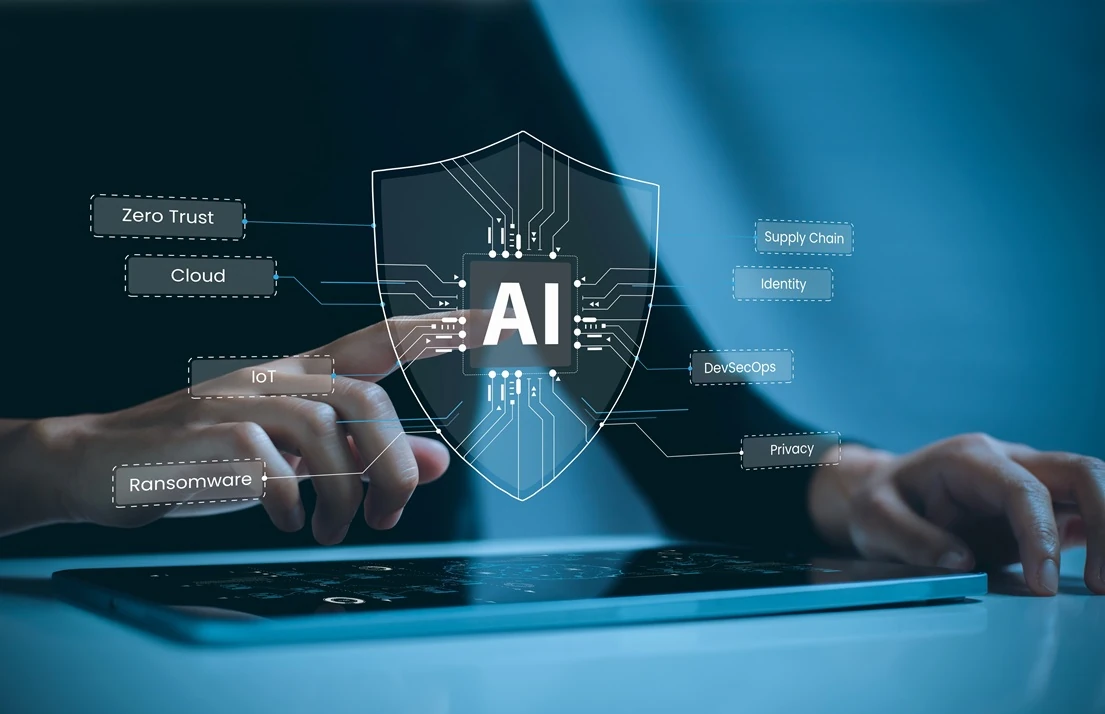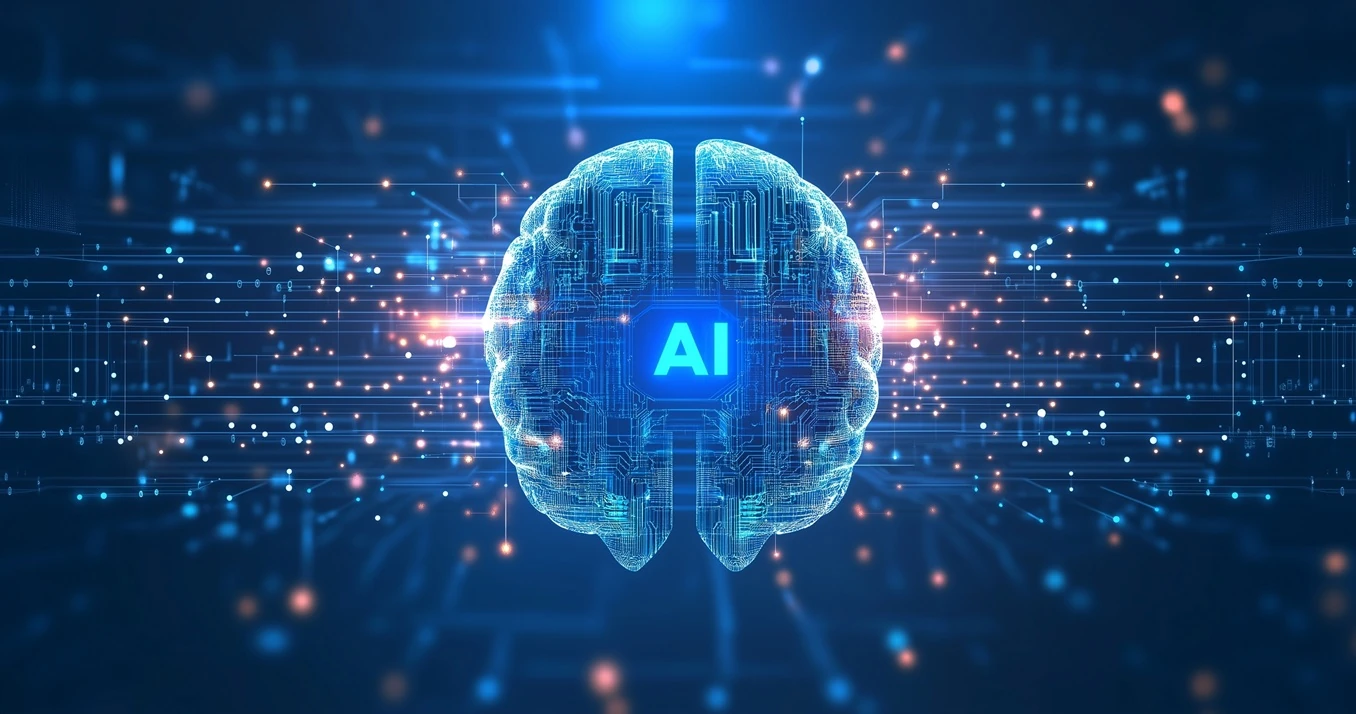AI in IT Security: Enhancing Protection and Ensuring Compliance
Estimated reading time: 15 minutes
Key Takeaways
- AI is revolutionising IT security by enhancing threat detection and ensuring compliance.
- Organisations are increasingly adopting AI-driven technology to combat cyber threats more efficiently.
- AI-powered solutions offer real-time monitoring, automated incident response, and proactive vulnerability assessments.
- Ensuring the security of AI systems and data is crucial to maintain the integrity of IT security frameworks.
- Integrating AI into IT security helps organisations stay ahead of evolving cyber threats and maintain regulatory compliance.
Table of contents
- AI in IT Security: Enhancing Protection and Ensuring Compliance
- Key Takeaways
- Introduction
- Understanding AI in IT Security
- AI-Powered IT Security Solutions
- Security in AI Systems
- AI Data Security
- Ensuring Regulatory Compliance with AI
- Benefits of Integrating AI into IT Security
- Challenges and Considerations
- Future Trends in AI and IT Security
- Conclusion
- Call to Action
- Internal Resources and Further Reading
- Visuals and Infographics Suggestion
- Final Thoughts
- Frequently Asked Questions
AI in IT Security is quickly reshaping how organisations protect their digital assets. With cyber threats increasing every day, it is essential to integrate advanced technologies that ensure both protection and regulatory compliance. AI, or artificial intelligence, applied in IT security transforms traditional methods. Modern IT environments now rely on intelligent systems that help monitor threats and ensure adherence to strict security standards.
Key points from Forbes highlight the increasing adoption of AI in cybersecurity. According to Forbes, many organisations are leveraging AI-driven technology to combat cyber threats more efficiently.
Recent statistics on cyber threats suggest a sharp rise in incidents, with Cybersecurity Ventures emphasising the pivotal role of AI in tracking and mitigating these threats. Cybersecurity Ventures
Understanding AI in IT Security
Defining AI in IT Security
- AI in IT Security means using artificial intelligence to help secure IT systems and data.
- It involves applying machine learning, natural language processing, and neural networks to recognise and counteract cyber threats.
Significance in Modern Digital Landscapes
- The digital world is evolving, and so are the tactics of cyber criminals.
- Organisations now face sophisticated attacks that require equally advanced countermeasures.
- By leveraging AI, businesses can stay ahead of potential threats and maintain a robust defense strategy.
Overview of AI Technologies Used in IT Security
- Machine Learning for Threat Detection
- Learns from previous attacks to predict new threats.
- Natural Language Processing for Log Analysis
- Interprets massive volumes of security logs to detect unusual patterns automatically.
- Neural Networks for Pattern Recognition
- Identifies complex patterns and anomalies in network behavior that human teams might miss.
These insights draw on definitions and significance discussed by IBM Security regarding the role of AI in safeguarding digital environments. IBM Security
Gartner provides an overview that showcases the technological advancements in AI for IT protection.
Additionally, exploring Custom AI Models Accelerate Business Growth – Outperforming Generic Alternatives can provide deeper insights into tailored AI solutions for enhanced security.
AI-Powered IT Security Solutions
Threat Detection and Prevention
- AI systems continuously monitor network traffic in real time.
- They identify irregular patterns that might signal an intrusion or malware attack.
- When found, these systems block suspicious activities automatically, reducing the window for potential damage.
Automated Incident Response
- When a threat is detected, AI-driven security systems initiate immediate countermeasures.
- These include isolating affected systems and alerting IT teams.
- By reducing the response time, organisations can significantly lessen the impact of a breach.
Vulnerability Assessment
- AI tools routinely scan IT infrastructures to pinpoint vulnerabilities that could be exploited.
- This proactive approach ensures that weaknesses are addressed before attackers can take advantage.
- Regular vulnerability assessments help maintain high-security standards within the organisation.
Case studies of successful AI implementation demonstrate significant reductions in breach incidents and enhanced overall security posture.
Detailed case studies and examples from McAfee showcase how companies benefit from AI-enhanced solutions. McAfee
Cisco provides detailed descriptions of various AI-powered IT security solutions and successful implementations.
Security in AI Systems
Importance of Securing AI Systems
- AI systems themselves can become targets for cyberattacks.
- Attackers might try to exploit vulnerabilities in AI models to manipulate outcomes.
- Ensuring robust security for AI systems is crucial for the integrity of the overall IT security framework.
Measures to Protect AI Models and Data
- Model Encryption
- Encrypt AI algorithms to protect them from unauthorised alterations.
- Secure Data Storage
- Use advanced protocols to secure data that trains the AI models against breaches.
- Regular Security Audits
- Perform audits frequently to verify that the security measures protecting AI models are effective.
- AI IT Support: Essential Benefits for Modern Businesses can offer additional strategies for safeguarding AI systems.
Ensuring Integrity and Reliability
- Consistent training and updates are needed to maintain AI accuracy.
- Implementing validation steps ensures that AI outputs remain trustworthy.
- Multi-layered security protocols combine human oversight with automated checks for better accuracy and reliability.
Research on securing AI systems is well-documented by MIT Technology Review, which explores various risks and solutions for AI vulnerabilities. MIT Technology Review
NIST offers best practices that guide organisations on methods to secure artificial intelligence, reinforcing the reliability of IT systems. NIST risk management framework
For further understanding of data protection and compliance, refer to Data Sovereignty in AI: Compliance and Data Protection in Australia.
AI Data Security
Definition and Role
- AI data security is the use of artificial intelligence to safeguard sensitive and confidential information.
- This approach uses smart encryption, rigorous access controls, and anomaly detection to protect data at rest and in transit.
- Organisations rely on AI data security to ensure that only authorised users have access to highly sensitive information.
Techniques for Securing Data
- AI-Driven Encryption Methods
- AI systems can create and manage complex encryption keys.
- Advanced Access Control Systems
- These systems monitor and restrict data access to authorised personnel.
- Anomaly Detection for Data Access Patterns
- AI can recognise irregular access patterns, indicating possible data breaches.
Interplay with Data Privacy Regulations
- Compliance with regulations such as APP, GDPR and CCPA is a significant concern for many organisations.
- AI data security tools ensure consistent data protection to meet these complex legal requirements.
- Automated compliance checks help organisations maintain up-to-date security measures without heavy manual oversight.
- To understand more about compliance, explore The Silent AI Revolution: Australian Businesses Face New Disclosure Requirements.
TechCrunch offers insights into AI data security techniques that are helping organisations protect data from breaches and unauthorised access. TechCrunch
GDPR.eu explains how these security strategies help meet legal mandates in data privacy and protection. GDPR.eu
Ensuring Regulatory Compliance with AI
Maintaining Compliance with IT Security Regulations
- AI monitors IT systems to ensure they comply with multiple standards and regulations.
- It tracks changes and anomalies to quickly alert organisations of any breaches in compliance, ensuring that safeguards remain active.
Automated Compliance Monitoring and Reporting
- AI systems generate compliance reports in real time, reducing the administrative workload.
- These systems use data analytics to pinpoint gaps and adjust pathways, ensuring that compliance is always maintained.
- Automation minimises human error and speeds up the reporting process during audits.
Adapting to Evolving Regulatory Standards
- Regulatory guidelines often change.
- AI can adapt to these changes much faster than traditional systems, ensuring ongoing compliance.
- Through automated updates and continuous monitoring, AI helps businesses avoid penalties and maintain a robust security posture.
The automated compliance monitoring features of AI are discussed in detail by Compliance.ai, which outlines practical solutions for regulatory adherence. Compliance.ai
Deloitte provides insights into ways AI quickly adapts to new regulations by utilising advanced monitoring capabilities and dynamic compliance checks. Deloitte
For ethical guidelines related to compliance, refer to Ethical Considerations in AI: A Guide for Australian Developers.
Benefits of Integrating AI into IT Security
Enhanced Threat Detection Accuracy and Speed
- AI systems continuously learn and improve, leading to a more accurate understanding of emerging threats.
- The speed of AI in identifying and mitigating intrusions significantly outpaces manual oversight.
- This accuracy minimises the potential for data breaches and related damages.
Reduction in Manual Workload for IT Security Teams
- By automating threat detection and incident response, AI frees up security professionals for more strategic work.
- IT teams can focus on proactive security measures rather than getting bogged down by repetitive tasks.
- This efficient allocation of resources leads to better overall network security.
Proactive Security Measures
- Traditional security systems typically react to threats; AI moves the focus to prevention.
- Predictive analysis allows organisations to anticipate and thwart potential cyberattacks before damage occurs.
- With proactive measures, companies can maintain a consistently high level of security without being reactive.
- Leveraging AI in digital transformation initiatives can further enhance these proactive measures. AI in Digital Transformation: Driving Technology-Driven Business Growth
These benefits are emphasised by PwC, which outlines the multi-faceted advantages of AI in cybersecurity.
Accenture describes how efficiency improvements through automation result in faster, more robust IT security frameworks. Accenture
Challenges and Considerations
Potential Risks and Limitations
- AI detection systems are not perfect; they can sometimes generate false positives or negatives.
- Relying solely on AI may lead to blind spots if technology fails to identify new types of attacks.
- Dependency on AI technology requires ongoing investments in training and updates to remain effective.
Ethical Concerns and Bias in AI Algorithms
- AI systems must be monitored to avoid biased outcomes that can affect security decisions.
- Ensuring fairness and transparency in AI algorithms is critical for ethical operations.
- Organisations should establish guidelines to mitigate bias and protect user rights.
- For comprehensive guidelines, refer to Ethical Considerations in AI: A Guide for Australian Developers.
Strategies to Overcome Implementation Challenges
- Continuous Training of AI Models
- Regularly updating AI systems with new data reduces the risks of outdated information.
- Human-AI Collaboration
- Combining the analytical power of AI with human judgment creates a more comprehensive security solution.
- Robust Testing Protocols
- Thorough testing and simulations can ensure AI systems operate as expected under various scenarios.
Harvard Business Review discusses the inherent risks and limitations in the use of AI for cybersecurity and provides insights on effective management. Harvard Business Review
Future Trends in AI and IT Security
Emerging AI Advancements
- Federated Learning
- Allows multiple entities to collaboratively train models without sharing sensitive data, enhancing privacy and security.
- Explainable AI
- Enhances transparency by making AI decisions understandable to IT professionals.
- Advanced Behavioral Analytics
- Improves threat detection through a deeper analysis of user and network behaviors, predicting attacks before they occur.
Evolving Role of AI in Managing Cybersecurity Threats
- AI will increasingly act as an autonomous defense system.
- As threats become more sophisticated, AI’s role in dynamic threat intelligence will grow.
- Integrated threat intelligence systems that use AI to continuously learn and update defenses will become the norm.
Conclusion
AI in IT Security stands out as an essential tool for protecting digital landscapes and ensuring compliance. By integrating machine learning, natural language processing, and neural network technology, organisations achieve unprecedented efficiency in detecting, preventing, and responding to cyber threats. Key benefits include enhanced threat detection, reduced manual workload, and proactive security measures. However, challenges like ethical concerns and potential AI limitations persist and require ongoing attention.
For organisations determined to maintain a robust security posture, adopting AI-driven IT security solutions is vital. This technology not only enhances protection but also ensures regulatory compliance in an increasingly complex cyber environment.




Pingback: AI Data Security: Protecting Australian Enterprises Effectively
Pingback: AI IT Support For Australian SMBs: Transforming Operations